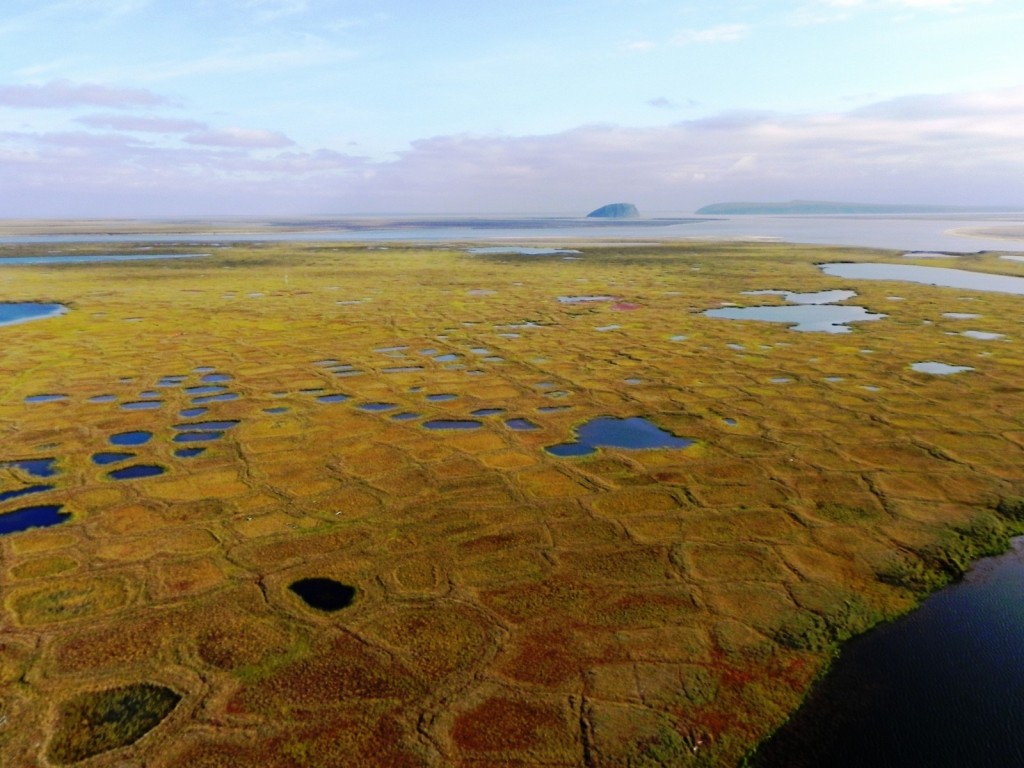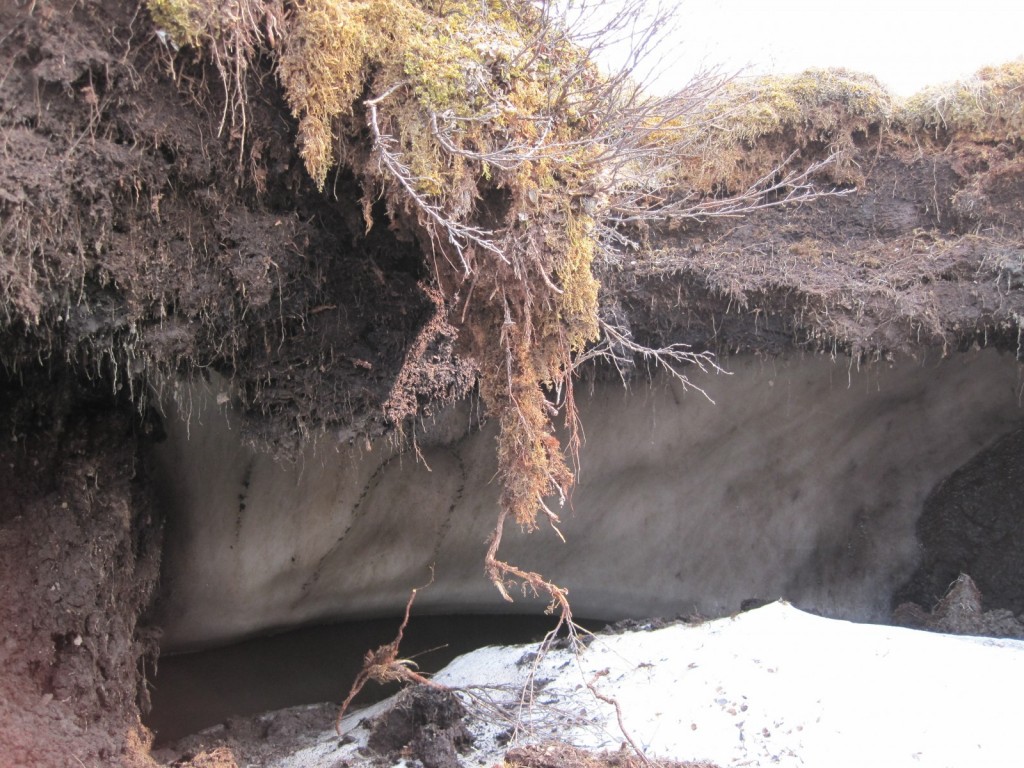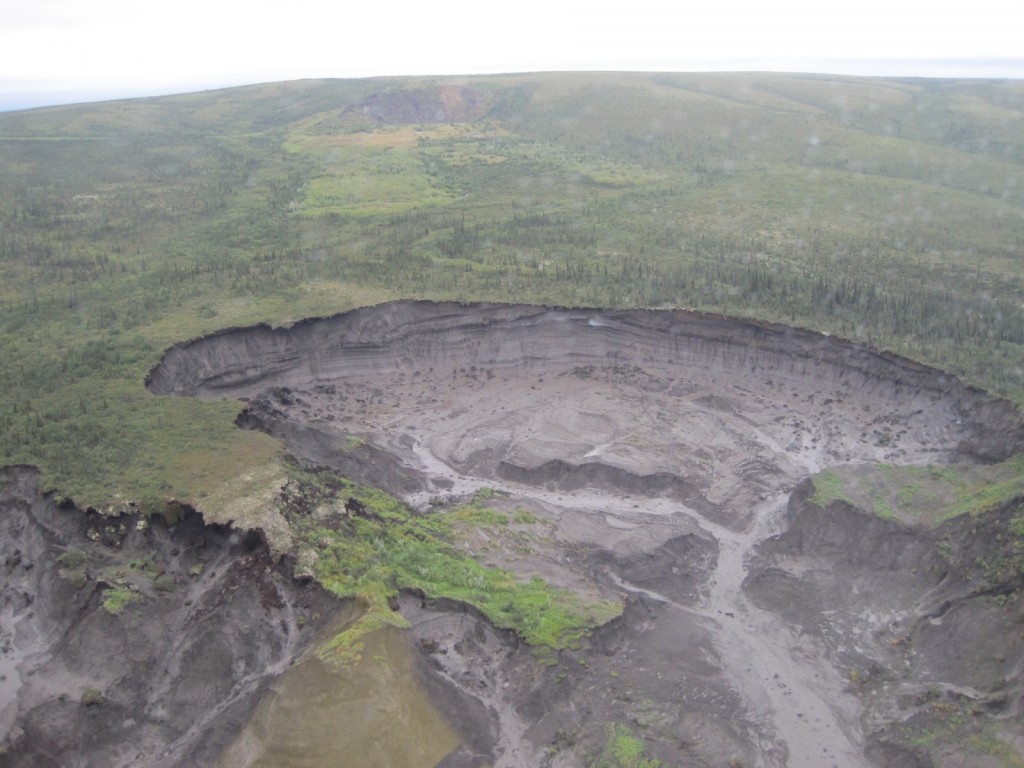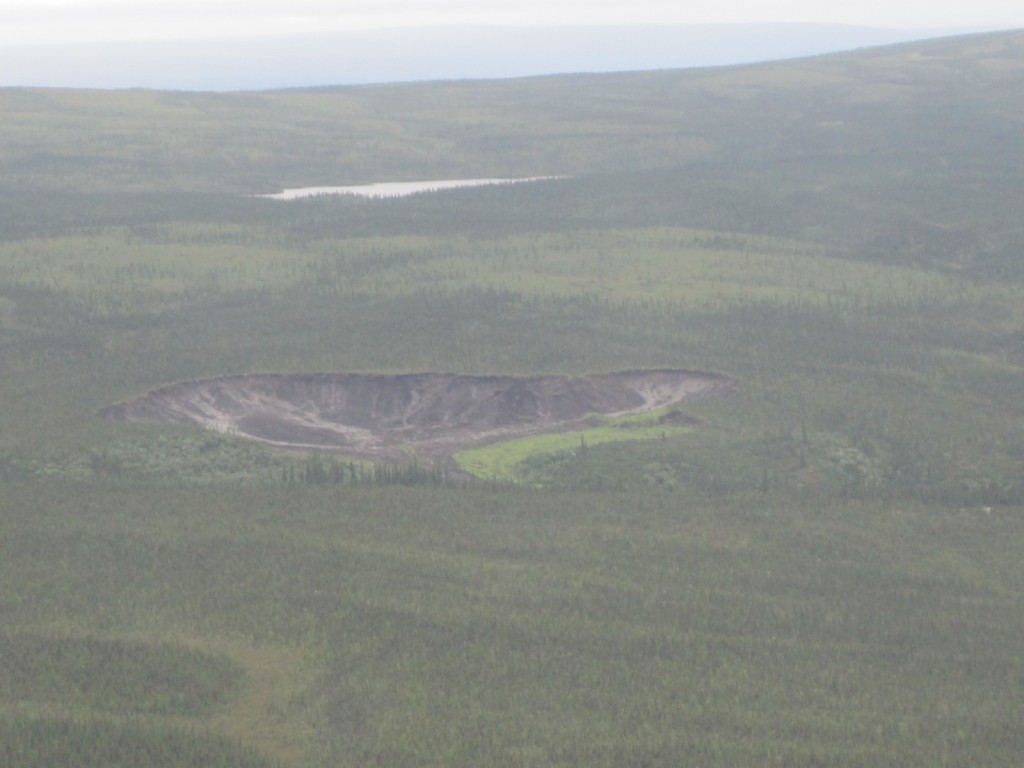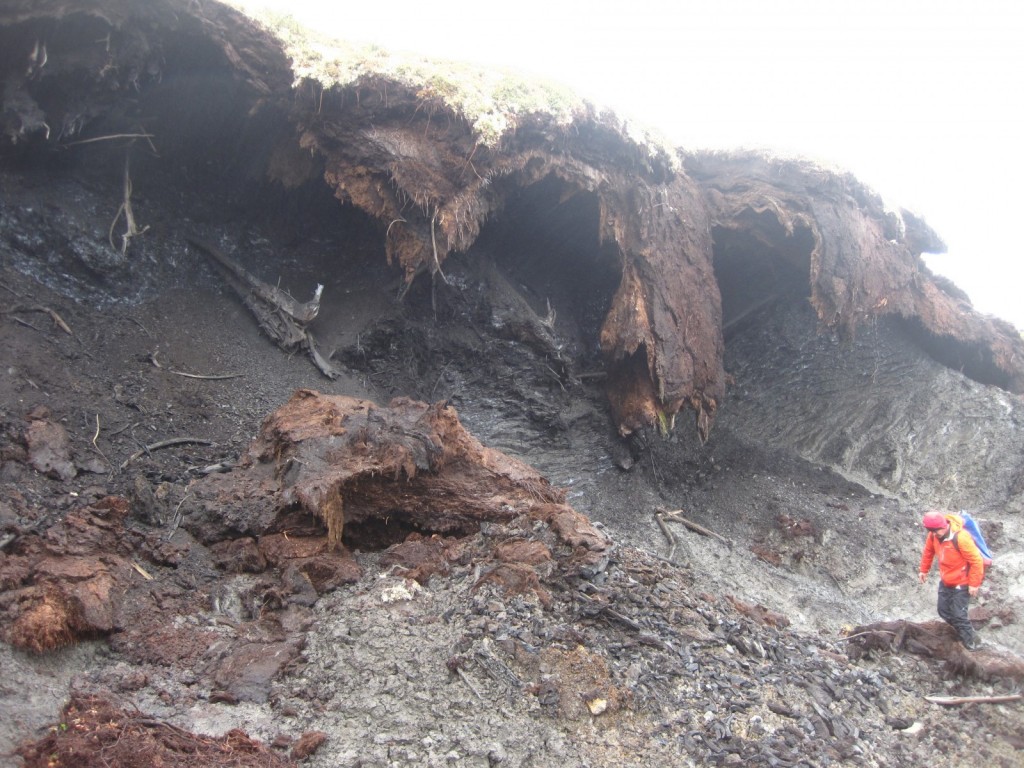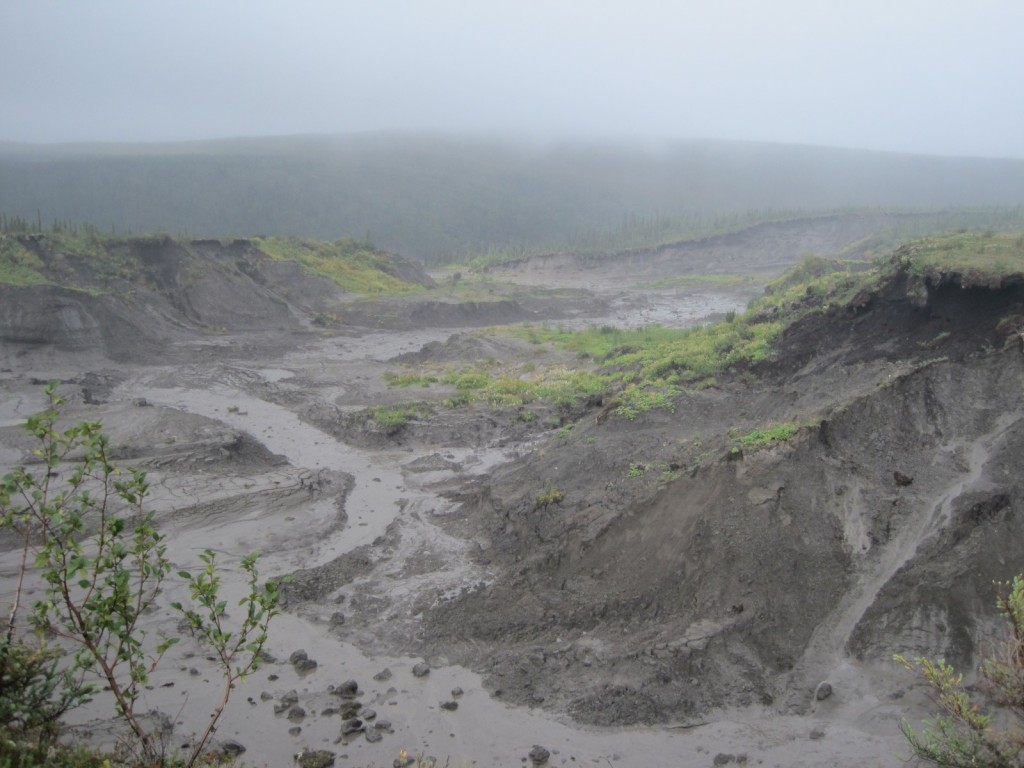This weeks photo is once again related to permafrost and the Arctic….something tells me I miss being there.
Anyway, the gorgeous photo below shows a terrific example of polygonal patterned ground from Siberia. Patterned ground is a phenomenon that occurs frequently in cold regions and is caused by the seasonal freeze-thaw of the active layer/soil. This process can produce a phenomenon called ice wedges that extend deep into the permafrost (see my photo of a large ice wedge below) as water infiltrates into a crack freezing it and expanding it. This repeats annually as the ice cracks due to the extreme cold and is then filled by new meltwater from the active layer, which freezes.
Ice wedges have excellent potential as a climate research tool as they can be very old and preserve the isotopic signature of each new year’s water. In fact, my research group has an MSc. student working on this exact thing.
Sorting of sediments by the freeze thaw of groundwater also creates patterned ground as the process forces larger sediments upward and lets smaller sediment settle eventually creating little piles of rocks on the ground surface. However, in the case of the photo below, which is in a poorly drained peatland, there are likely lots of ice wedges.

